Your Simple Guide to the Different Types of Handrails for Stairs
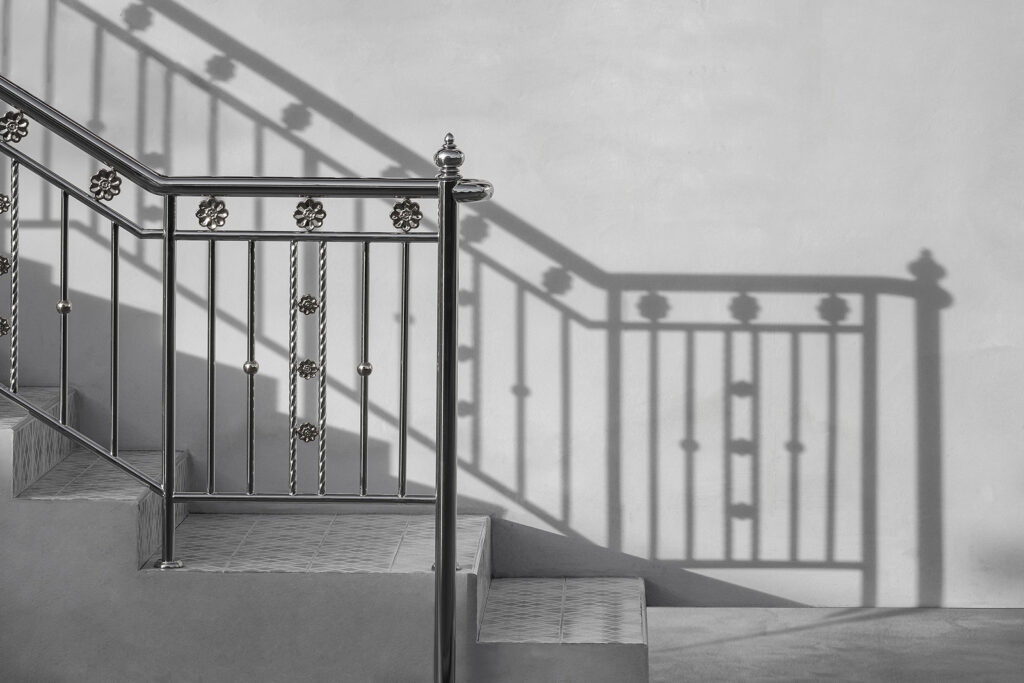
Being aware of the different types of handrails available for stairs will help you optimise your staircase design and staircase safety. Whether you’re looking for a handrail for your home or for a commercial space, we’ve got you covered with this simple guide to what’s on offer.
Learn exactly what a handrail is, why it’s essential for a staircase, and the different types of design available so you can make an informed decision.
What Is a Handrail?
A handrail is the part of a staircase that runs alongside the stairs at arm level, providing support for people to hold onto as they use the stairs. The handrail can either be attached to the wall or attached to spindles on the balustrade, but needs to run the full length of the staircase. It’s also referred to as a stair railing.
The balustrade is the term for the collective parts of a finished staircase, including the base rail, spindles, handrail, and newel posts.
What Is the Difference Between a Handrail and a Bannister?
A bannister is technically just a type of handrail, one that’s supported by spindles or balusters. This type of design means the handrail can be freestanding and not attached to the wall. Often a staircase will have both a bannister and a handrail for maximum safety.
Don’t worry if all these terms are confusing, we have a full guide to the different parts of a staircase that explains them all.
The Different Types of Handrails & Their Benefits
As with staircases and stair design in general, handrails can come in all shapes and sizes. Here is a quick guide to the different types of handrail materials and their benefits:
Wooden Handrails
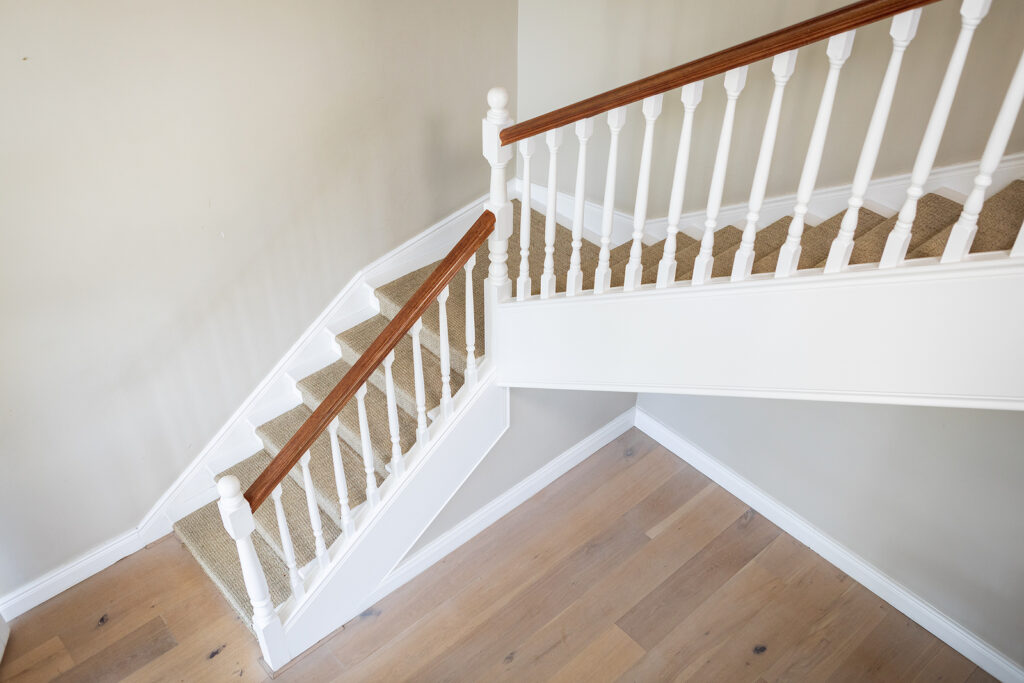
Wood handrails are one of the most common types of handrails for stairs, especially in domestic properties. Wood provides a timeless look, lending that classic aesthetic charm that can’t be replicated with other materials.
As there are so many different types of wood and wood finishes available, wooden handrails are also versatile. Depending on the hue, grain, and staining, a wood handrail can suit a traditional home or a home with a more modern design. The material can be easily moulded to different shapes, too. You can even easily paint on wood (if you know how to!), styling it how you wish.
Not only does wood have these great aesthetic qualities, but it is also a strong and durable material, suitable for heavy usage. Some of the most popular woods for stair handrails are oak, mahogany, ash, cypress, and cherry wood. Oak is most commonly used; red oak is easy to stain and sand while white oak is a very hard material that’s more water resistant.
What Kind of Space Does a Wooden Handrail Suit?
Wood handrails are best for homes, creating a warm feel and are able to have more decorative elements added to them in contrast to metal handrails. The affordability and ease of installation make wood great for DIY handrail projects.
Metal Handrails
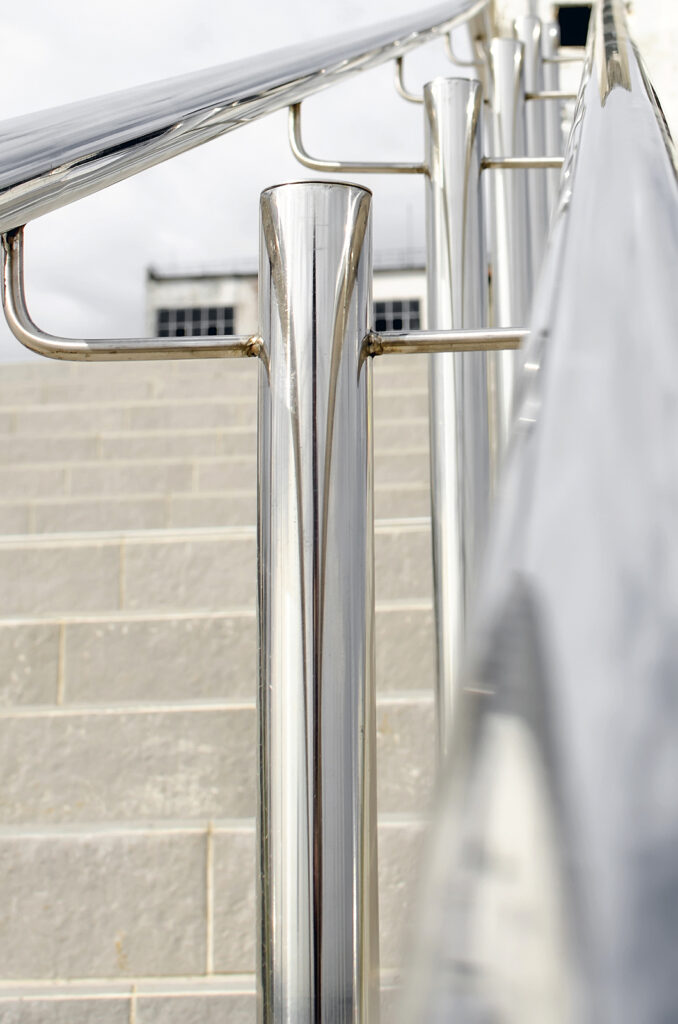
Metal handrails are more common in industrial and commercial settings. However, a sleek metal handrail can suit a chic, contemporary home with a minimalist design.
There are many different types of metal for handrails, each with different benefits:
- Stainless steel: Stainless steel, also known as galvanised steel or powder-coated steel, is one of the best materials for handrails, super strong and resistant to rust. This resistance comes from a coat of zinc which works to prevent corrosive materials from damaging the metal.
- Aluminium: Aluminium is much lighter in weight than steel, with a lower density. It’s also more versatile, able to be easily cut and formed as well as powder coated in different colours. It is an expensive metal, however, and is vulnerable to dents and scratches.
- Wrought iron: Wrought iron provides a particular kind of traditional look due to its extreme popularity in the mid-1800s. Iron is highly malleable, so ornate decoration effects like intricate leaves and scrolls can be added.
What Kind of Space Does a Metal Handrail Suit?
The weight and difficulty of installation mean metal handrails for stairs are not a practical choice for simple home decor.
Stainless steel can provide a clean, contemporary design that suits professional spaces. They require little maintenance and are easily cleaned with simple products, keeping hygiene levels up. They can also be used outside as well as inside.
Aluminium is particularly great for an outside staircase, able to withstand adverse weather conditions and still perform well. The versatility of design makes them great for commercial spaces, where high functionality and an attractive aesthetic need to combine.
Iron handrails are often custom-made, making them more expensive. The material can also rust with weather exposure, so is better suited to inside spaces. Traditional homes looking for a particular design aesthetic can benefit from a wrought iron handrail, as can commercial spaces.
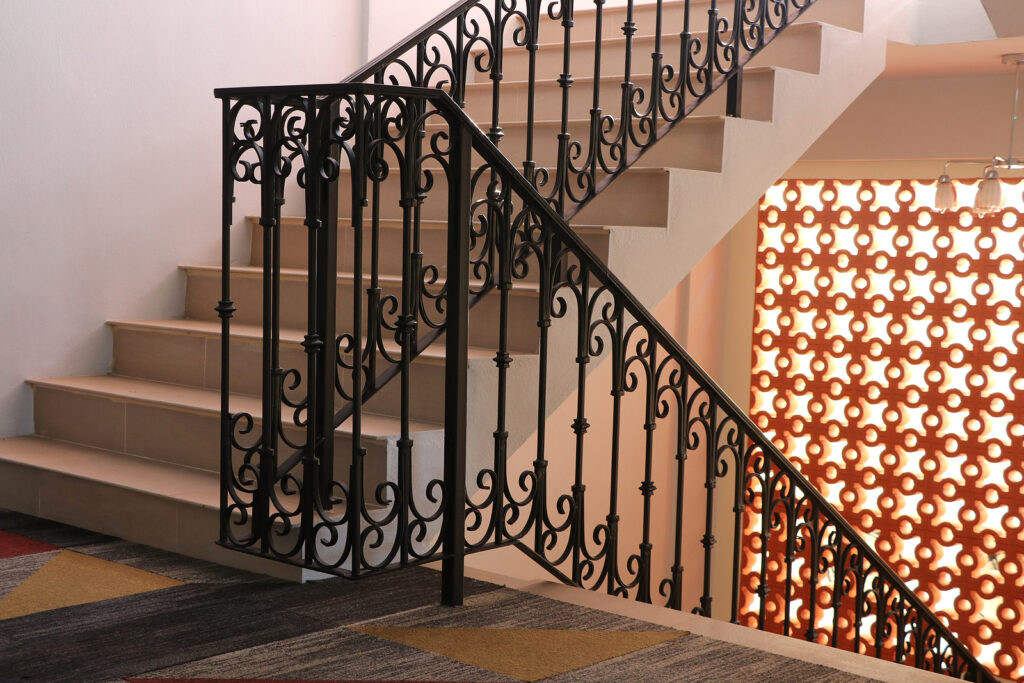
Glass Handrails
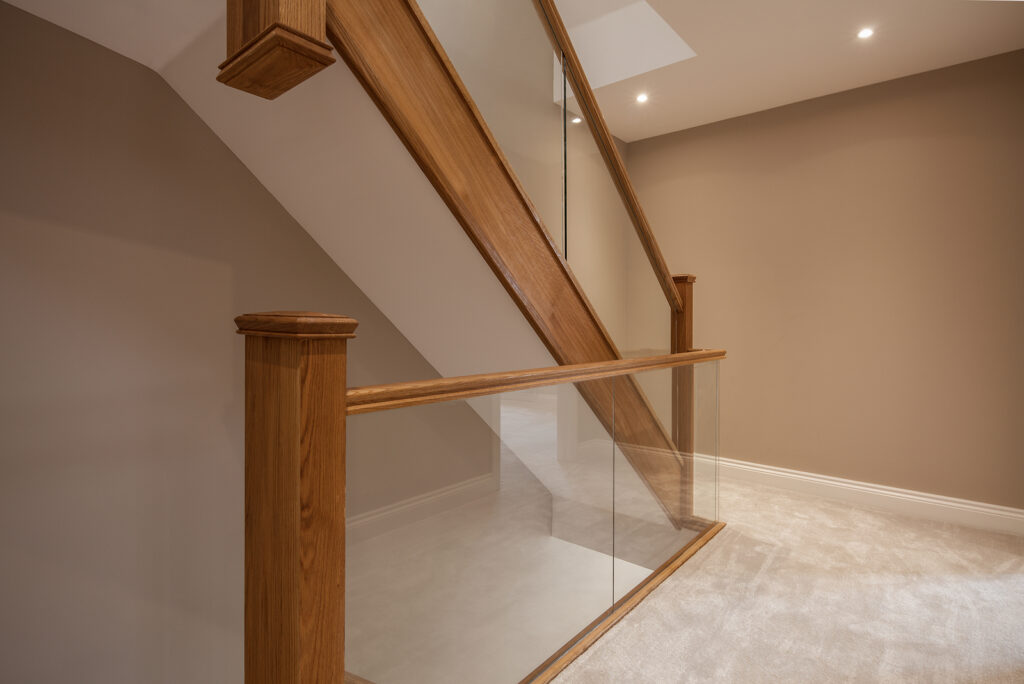
Glass is a popular choice for a contemporary staircase, surprisingly tough and reliable. Usually, the actual handrail is not made of glass, but is a metal or wooden handrail attached to glass panels instead.
The great benefit of glass railing is that it provides an aesthetically-pleasing safety feature, with no obstruction of light or view. Glass can be clear, semi-transparent, frosted, semi-transparent, or tinted. It can even be etched if a more decorative element is desired.
What Kind of Space Does Glass Railing Suit?
Glass railings can look good anywhere, extending a light, spacious feel in a modern home or looking clean and contemporary in a commercial or professional setting. They do require more frequent cleaning, however, as dirt and fingerprints are more easily visible, but the process is easy.
Types of Handrail Designs
In terms of the look and design of the handrail, rather than just the material, there are lots of options available. Here are the most common:
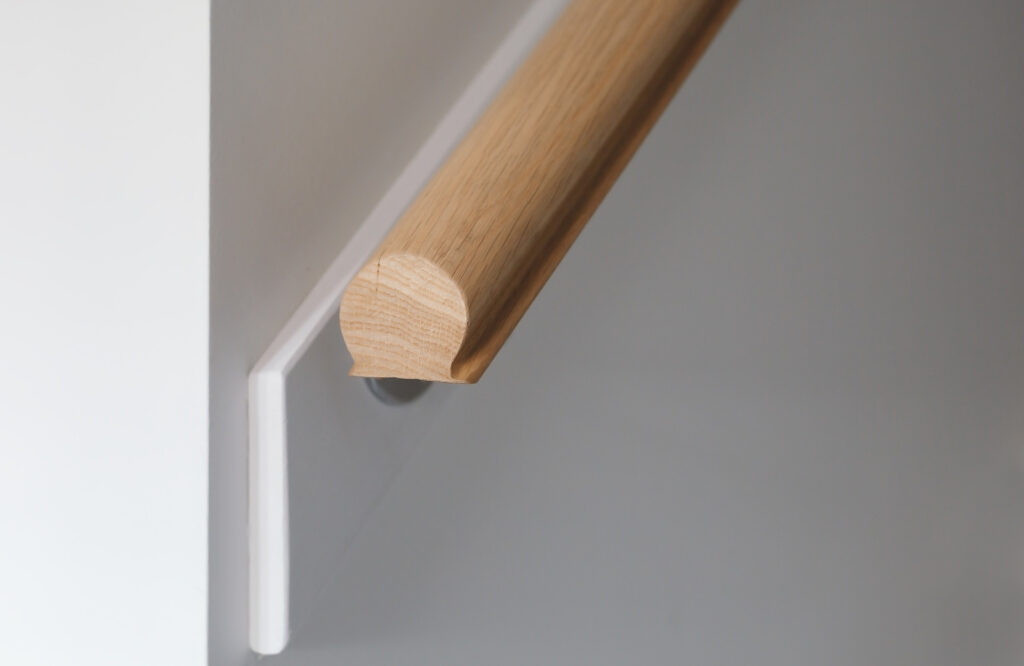
- Mopstick handrails: These handrails are circular with a flat underside and are usually wall-mounted handrails. However, if they are attached to a balustrade, they are too narrow to attach to wooden spindles and instead suit glass panels.
- Pig’s ear handrails: These are so-called because of their curved design that resembles an ear. They are always wall-mounted handrails, providing a cost-effective choice as they don’t need brackets or patrices.
- Cylindrical: A cylindrical design is most often seen with metal handrails but can be wooden, too.
- Blocky: Chunky wooden square handrails can make a staircase look more majestic and substantial.
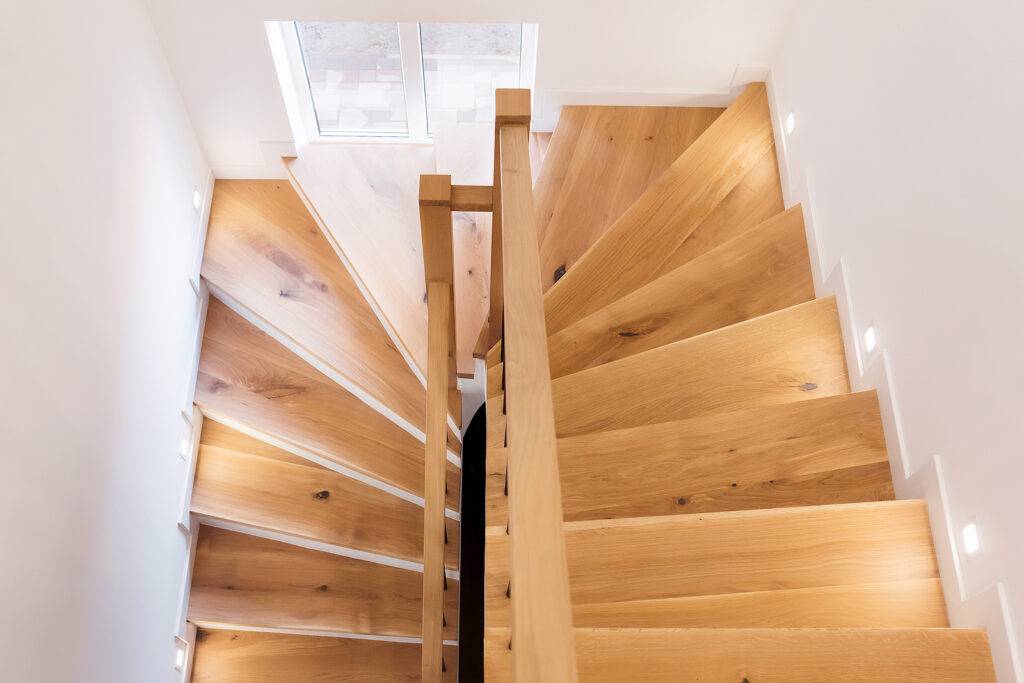
All of these types of handrail designs can be accessorised with brackets, wall patrices, end caps and end scrolls.
Finish Off Your Staircase With Stair Rods Direct
We have a wide range of staircase accessories that can complement whatever type of handrail you have. Make your hardwood staircase cosier with a beautifully-crafted stair carpet runner, all of which are easy to install and come in a range of designs. You’ll need to secure them with our premium choice of stair rods, perfect for pairing with a metal handrail.
With Stair Rods Direct, you can guarantee quality products that provide the flawless finishing touches for your staircase and hallway that make all the difference. Don’t forget, we also offer free UK delivery on orders £75 and over.


